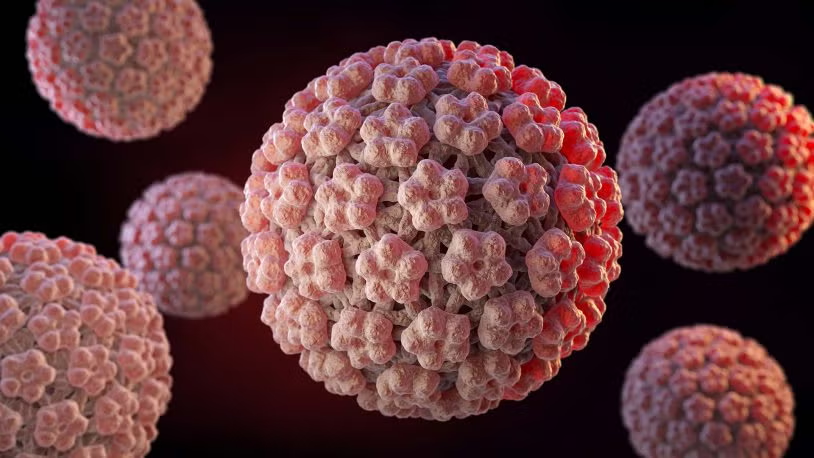
Warts are one of those annoying skin problems that practically everyone gets at one time or another, but are often misunderstood, or even a bit embarrassing to discuss. These little grainy bumps can appear on the back of your hands, on your feet, or even elsewhere on your body, and while they’re usually not dangerous, they can be irritating, painful, or just plain aggravating.

Warts are caused by the human papillomavirus, or HPV. There are more than 100 strains of this virus, but only a few of them cause the warts you may notice on your hands, feet, or other areas. The virus creeps in by way of small cuts or breaks in your skin, causing excess growth in cells that produces the thick, hard knot that we know as a wart. Not everybody who is exposed to HPV will get warts, however your body has a lot to do with whether or not you do.

There are a few kinds of warts, and each is a bit different in appearance and preferred location on your body. Common warts most often appear on your fingers or hands as small, rough lumps with a smattering of black spots these are actually blood vessels that have clotted. Plantar warts, meanwhile, move in on the sole of your foot. Due to the pressure of standing or walking, they tend to grow inward under a thick patch of skin, occasionally bringing pain or tenderness. Mosaic warts are multiple plantar warts that can cover more extensive parts of your foot, whereas flat warts are less rough, smaller, and occur in high numbers on any part of the body. Filiform warts are small threads of warts that usually occur around the mouth, eyes, or nose. There even exist warts that only strike individuals who work with raw meat, referred to as butcher’s warts, and unusual ones that form within the mouth.

Warts are highly infectious, although not the manner in which you might be imagining. The virus is transmitted via direct skin-to-skin contact or by transferring items such as towels or razors that have come in contact with a wart. It thrives in warm, moist environments, so places like swimming pools and locker rooms are common hotspots for picking up the virus, especially if you’re walking around barefoot. Nail biting or picking at hangnails can also give the virus an easy entry point, leading to warts around your nails.

Certain groups are more likely to develop warts. Children and teenagers are frequent targets, as are people with weakened immune systems such as those with HIV/AIDS or who have had organ transplants. If you’ve had warts before, you’re also more likely to get them again. People who handle raw meat regularly or who have the habit of biting their nails are at higher risk, too.

Warts may vary in appearance depending on the type, but they tend to be dome-shaped, flat, rough, or bumpy and colorless, brown, gray, or black. Some contain those characteristic black dots, and others are smooth or stringy. They may be as small as a dime or as big as the tip of your thumb. Most warts are not painful, but plantar warts can be painful while walking, and warts sometimes get infected if they are picked at or cut.

Most warts will disappear by themselves, particularly in individuals who have healthy immune systems. It may take several months or a few years to do so. Yet, many individuals opt to have their warts removed because they are irritating, painful, or just ugly. Warts can be treated with over-the-counter preparations having salicylic acid, which erode the wart layer by layer. Medical treatments involve using chemicals such as cantharidin to blister beneath the wart, liquid nitrogen freezing of the wart (cryotherapy), or more destructive measures such as surgery, electrosurgery, or laser ablation. Immunotherapy, which aids your immune system in eliminating the virus, is available for recalcitrant cases.

It’s not a good idea to attempt to cut or tear off a wart yourself, because that can cause infection and other problems. If a wart is tender, is changing, bleeds, or isn’t getting better with treatment, you should visit a medical professional. This is particularly important if you have a compromised immune system, diabetes, or impaired sensation in your feet.

Avoiding warts is a matter of reducing your contact with HPV and keeping your skin safe. Don’t walk around barefoot in public shower stalls or pool decks, don’t share personal grooming items such as towels or razors, and try not to bite your nails or pick at hangnails. Keeping your skin dry and clean, and covering scrapes or cuts, will also help to keep the virus away.

Although warts are generally a nuisance, they can be troublesome at times. Warts can become infected if picked at, and plantar warts can alter the gait, leading to eventual muscle or joint pain. For others, visible warts may have an impact on feelings of self-worth or mental stability.

Warts are very prevalent, occurring in approximately 10% of the global population, and even higher in children who attend school. Although they are annoying at times and tenacious, knowing why they occur, how they are transmitted, and how to treat them as well as how to avoid them will make living with warts much less stressful.
Related


